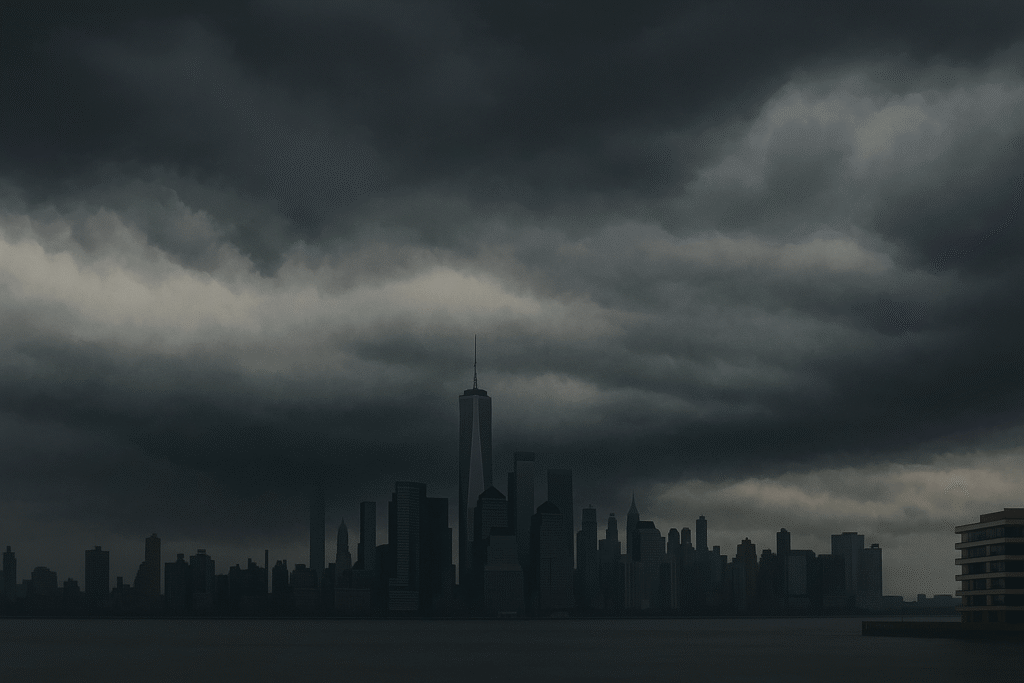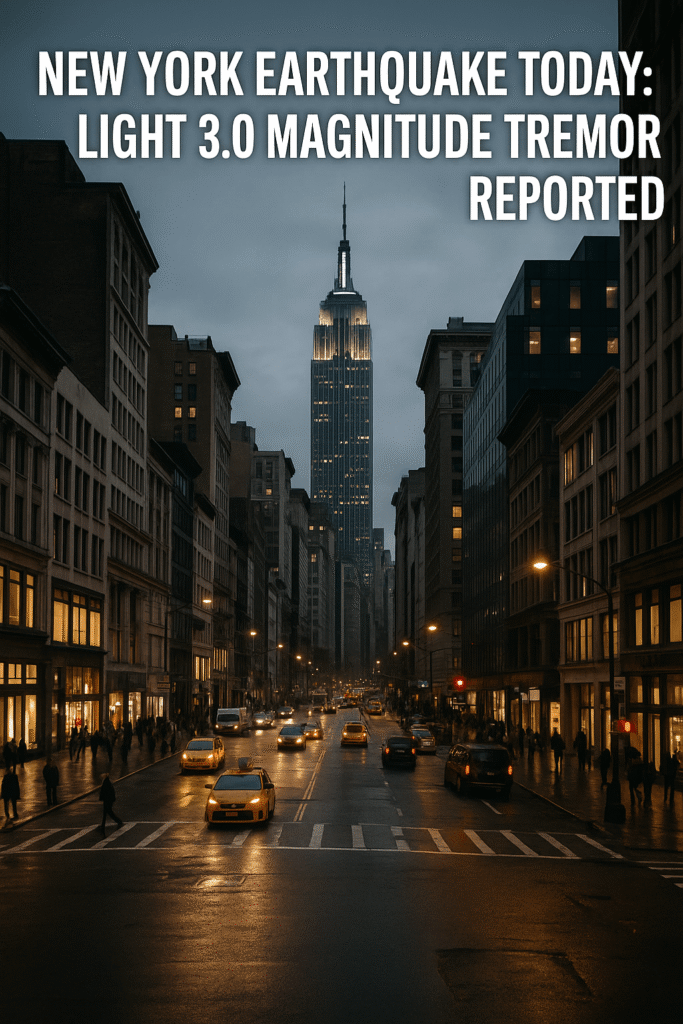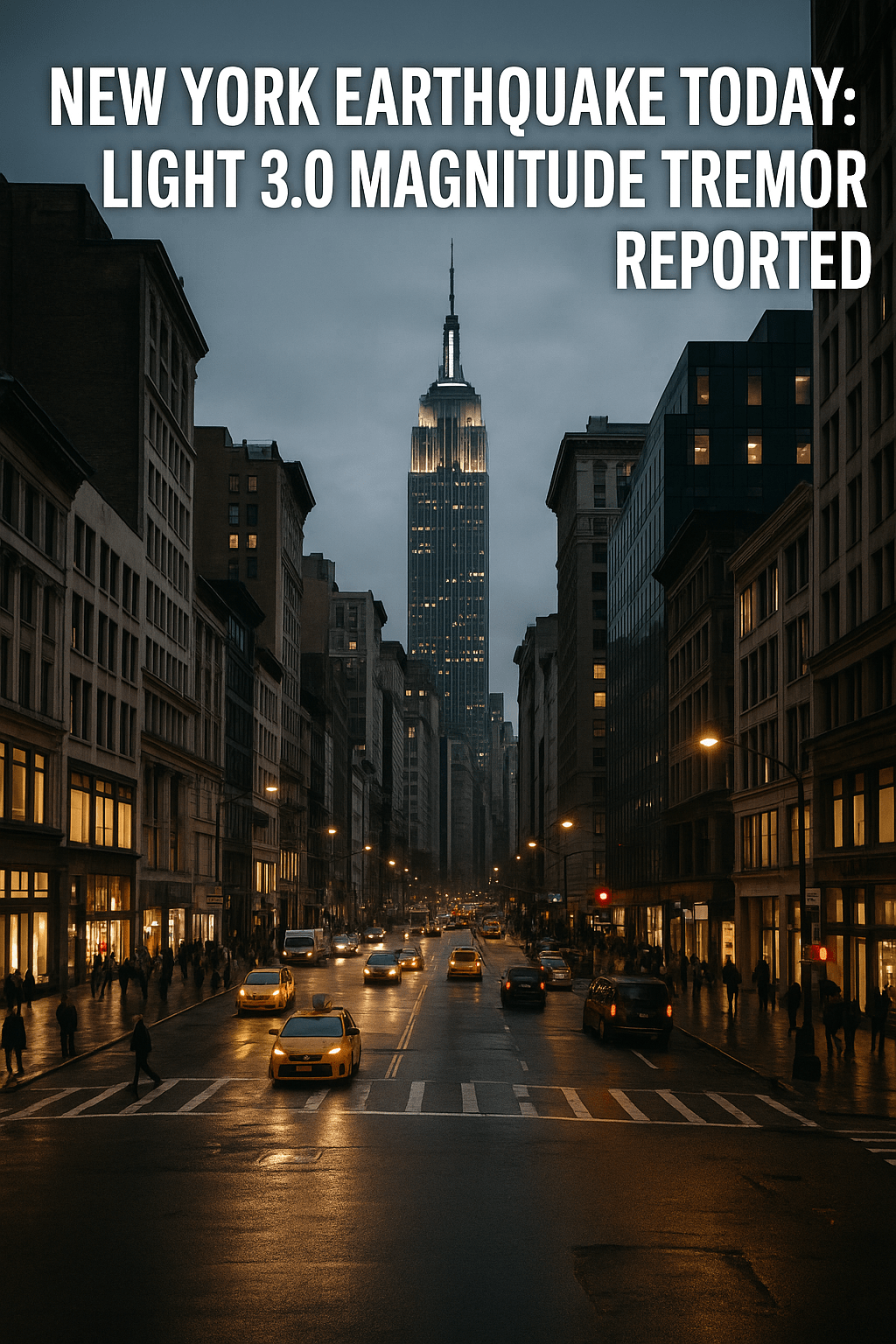
A rare geological surprise startled residents in the Big Apple late Saturday night. The New York earthquake today, recorded at a magnitude of 3.0, briefly shook the metropolitan region, prompting a flood of social media responses and raising eyebrows across the city.
The U.S. Geological Survey (USGS) confirmed that the epicenter was near Hasbrouck Heights, a suburban town in New Jersey, just under 8 miles west of Central Park. The tremor struck at a depth of approximately 6.2 miles, making it shallow enough to be felt across a broad area. Though no major damage occurred, the unexpected shake served as a wake-up call for thousands.
Public Reacts Swiftly as Social Media Buzzes
The latest NYC earthquake didn’t go unnoticed. Within minutes, residents from Brooklyn, Manhattan, and Jersey City posted their experiences online. “Did anyone else feel that?” trended on X (formerly Twitter), while the official Empire State Building account humorously tweeted, “I’m fine.”
Local authorities, including New York City Emergency Management, reported no significant damage or injuries but urged residents to remain aware of aftershocks or similar events.
Although the earthquake in New York was brief, many described it as a sudden jolt followed by a low rumble, lasting only a couple of seconds. A Brooklyn resident said, “It felt like a truck hit the building. It was that fast but unforgettable.”
A Look at the Science Behind the Shake
According to USGS New York quake data, a 3.0-magnitude earthquake rarely causes destruction, especially in areas with solid infrastructure. However, seismic activity in the northeastern United States is uncommon, making even minor tremors newsworthy.
Experts suggest that Saturday’s shake was a result of tectonic pressure buildup along ancient fault lines. Unlike California, which sits on the notorious San Andreas Fault, New York’s seismic events tend to be more scattered and infrequent.
Back in 2024, a 4.8-magnitude earthquake struck Tewksbury, New Jersey, just slightly west of this weekend’s tremor. That quake, although stronger, caused no structural damage either, but added to ongoing discussions about Northeast U.S. preparedness for rare seismic events.
Why This Minor Quake Matters

. For starters, the New York earthquake today serves as a reminder that urban infrastructure must be prepared not just for likely threats like storms or power outages, but also for unexpected natural events.
Seismologists continue to advocate for increased monitoring in regions like New York, which sit far from plate boundaries but aren’t immune to tectonic shifts. Some older buildings in the city remain vulnerable, especially if larger earthquakes were to occur in the future.
Emergency Response and Public Safety Measures
Following the tremor, emergency services across NYC checked for possible damage reports. By Sunday morning, officials confirmed that all critical infrastructure, bridges, tunnels, and subway lines were safe and fully operational.
While there were no injuries, the city’s emergency alert system received over 2,000 responses from residents who reported feeling the quake. This data not only helps map quake intensity but also enhances preparedness for future events.
The earthquake near Central Park caught some late-night walkers and drivers off guard, but emergency services responded quickly. No evacuations occurred, and utility companies confirmed there were no disruptions in service.
What’s Next? Staying Prepared in a Changing Climate
The New York tremor news may not dominate headlines for long, but it adds to a growing list of unusual weather and geological events affecting urban areas in the U.S. From extreme heatwaves to flash flooding and now earthquakes, cities must evolve their emergency strategies.
Officials are now encouraging residents to download NYC’s Notify App for real-time updates on seismic events and other emergencies. They’re also pushing for more investment in building resilience and updating seismic codes where needed.
Experts recommend that individuals:
- Know where to shelter during a quake (under a sturdy table or against an interior wall),
- Keep a basic emergency kit at home,
- Stay informed through official government sources.







